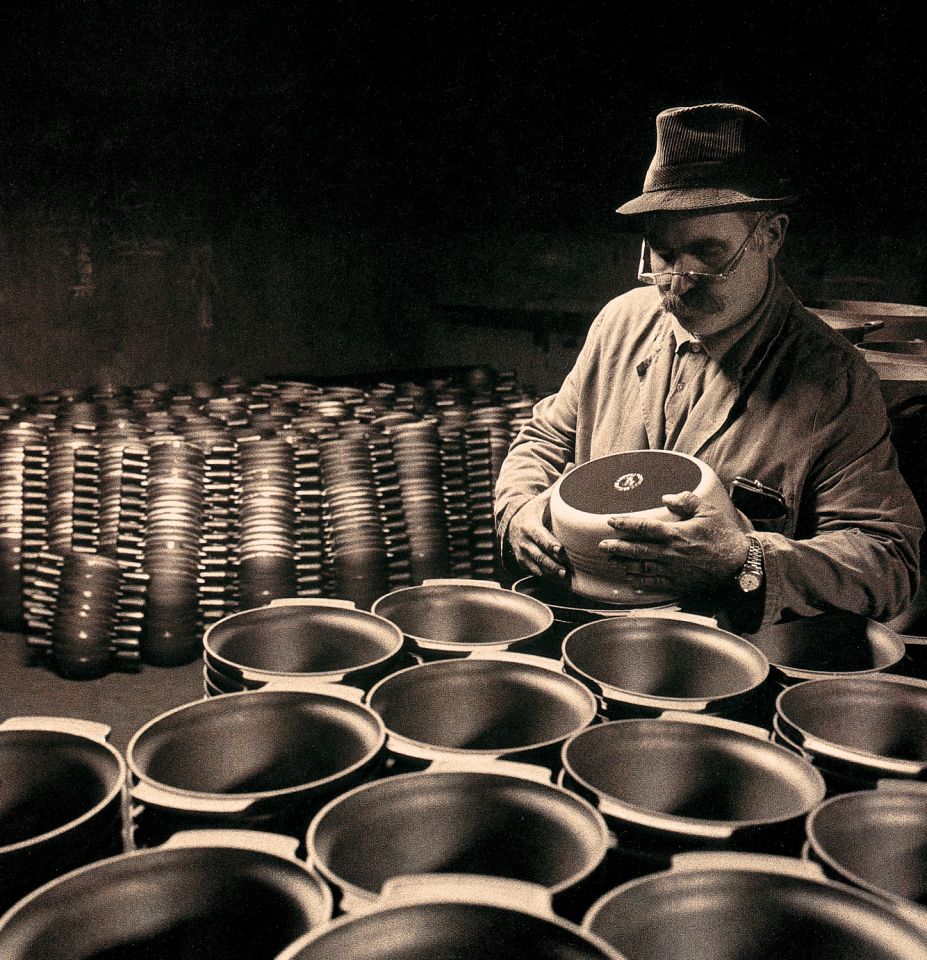Good cooking depends on good ingredients and the good art of the cook, of course, but the better the ingredients, the better the results. And this is the premise on which we have based our work. Le Creuset since its origins in 1925, since it uses the best iron, steel, stoneware ceramics and silicone to produce one of the most reliable, highest quality and longest lasting cast iron cookware on the market.

A specialist in pots (Armand Desaegher) and a specialist in enamels (Octave Aubecq) met at the Brussels Fair in 1924. It was there that they decided to found a company for enamelling kitchen utensils. It was a done deal. The following year they opened the Le Creuset factory in the small French town of Fresnoy-Le-Grand, where, to this day, they still produce their products following the traditional techniques and the primitive process of forging and enamelling, and from there they are distributed to more than 60 countries.

One of his first works is the cocotte, and continues to be the house's star product, especially in its characteristic volcanic tangerine colour, which represents the brand.

But the range of products is very varied: pots, casseroles, casseroles, pans, pans, fondues... As well as the range of colours, which from the beginning have linked Le Creuset with the values of originality and innovation in an area, the kitchen, which until then has only prioritised functionality above all else.

Fora pors! Welcome to colour! The volcanic tangerine is followed by elysian red, granite grey, cream, chocolate, festuc, satin blahs and kiwis, lavender...

And as for the range of products, why not create a range in brown colour, called Spanish Pueblo? Fet.


Why not create a cocotte especial per a verdures anomenada Pumpkin for American consumers? Fet.

I una anomenada Sukiyaki pels japonesos? Fet.


I a Tatin Dish pels francesos? Fet.

Or a Karahi or a Balti pels indis? Fet.


And let's not forget the Italians... We produce a special cassola for them for the risottos? Fet! Fet! Fet!


Each piece of cast iron is unique, because it is made in its own piece of sand that is destroyed after the pit.
It then passes into the hands of craftsmen (many of whom belong to families who have worked in the same factory for generations), who fill it, apply the layers of enamel and supervise the first stage of vitrification, which is key to giving cast iron its characteristic beauty and resistance.

And at this point, the question of a thousand: Why cast iron? Because it is the most resistant material and the one that best retains and distributes heat. What's more, it was already used by the Romans and, on top of that, while you cook, you exercise. What more do you want?


